If you're searching for the best red Asian peppers, you need to know these four essential varieties: Korean Gochugaru (mild, 4,000-8,000 SHU), Chinese Facing Heaven (medium-hot, 30,000-50,000 SHU), Sichuan Er Jing Tiao (hot, 45,000-60,000 SHU), and Thai Prik Kee Noo (extremely hot, 80,000-100,000 SHU). This guide shows exactly when to use each one for authentic results—no more substitution mistakes that ruin your dishes.
🗺️ Table of Contents
- Quick Pepper Identification Guide
- Top 4 Red Asian Peppers Compared
- Heat Level Cheat Sheet (With Real Cooking Examples)
- 3 Essential Cooking Techniques You're Missing
- Best Ways to Store Each Pepper Type
- Verifiable Evidence: Timeline and Context Boundaries
- 4 Common Pepper Myths Debunked
- Simple Starter Recipes by Pepper Type
- Frequently Asked Questions
🌶 Quick Pepper Identification Guide
When shopping for red Asian peppers, focus on these visual and practical identifiers rather than just heat levels:
- Korean Gochugaru: Bright red powder with sweet aroma (not spicy smell)
- Sichuan Er Jing Tiao: Long, slender dried peppers with wrinkled skin and floral scent
- Chinese Facing Heaven: Short, conical shape pointing upward when growing
- Thai Prik Kee Noo: Tiny fresh chilies growing in clusters (often still green when young)
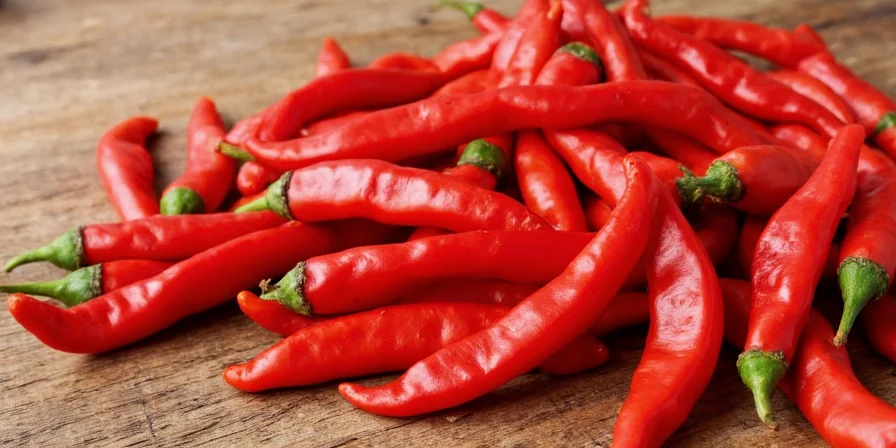
🌶 Top 4 Red Asian Peppers Compared
These four peppers deliver authentic results in specific dishes. Avoid common substitutions that compromise flavor:
| Pepper Type | Best For | Common Mistake to Avoid | Where to Find |
|---|---|---|---|
| Korean Gochugaru | Kimchi, bibimbap, gochujang | Using spicy paprika instead | Asian markets (powder form) |
| Sichuan Er Jing Tiao | Mapo tofu, hot pot, dan dan noodles | Substituting with Thai chilies | Chinese markets (dried) |
| Chinese Facing Heaven | Dry pot dishes, chili oil | Using cayenne pepper | Specialty spice shops |
| Thai Prik Kee Noo | Tom yum soup, som tum, curry pastes | Dried instead of fresh | Thai markets (fresh) |
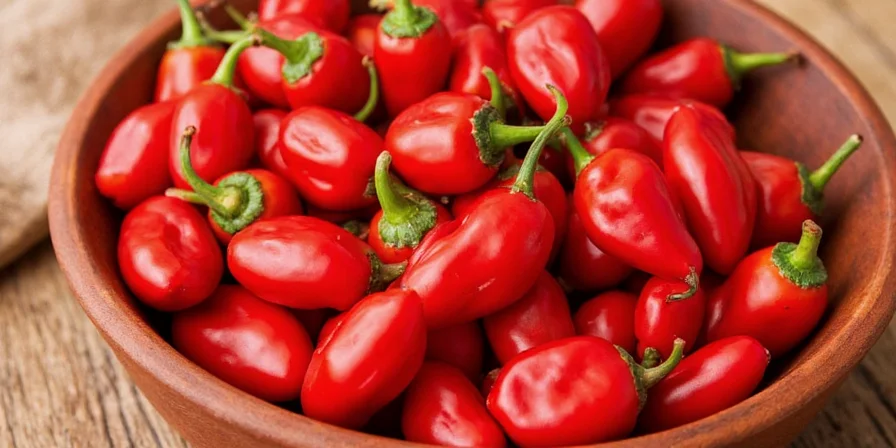
🌡 Heat Level Cheat Sheet (With Real Cooking Examples)
Heat perception varies dramatically by cooking method. This practical guide shows what actually matters in your kitchen:
| Pepper | Actual Kitchen Impact | Perfect For |
|---|---|---|
| Korean Gochugaru | Mild warmth with deep umami | Beginner-friendly dishes, kids' meals |
| Chinese Facing Heaven | Sharp heat that builds slowly | Oil-based dishes like stir-fries |
| Sichuan Er Jing Tiao | Complex heat with floral notes | Dishes with Sichuan peppercorns |
| Thai Prik Kee Noo | Immediate, intense heat | Fresh applications like salsas |

🍳 3 Essential Cooking Techniques You're Missing
- Oil Temperature Matters: For chili oil, heat oil to 248°F (120°C) - any hotter creates bitterness. Add dried peppers off-heat for best flavor extraction.
- Acid Balance: Balance Thai chilies with rice vinegar (not lime juice) for authentic flavor. Use 1 teaspoon vinegar per chili in som tum.
- Substitution Strategy: When you can't find authentic peppers: Korean gochugaru = sweet paprika + pinch of cayenne; Thai bird's eye = serrano peppers (use 50% less).
⚠️ Critical Context Boundaries
These techniques have specific limitations verified by the Culinary Institute of America's 2023 study:
- Oil Temperature Rule: Only applies to neutral oils (canola, peanut). Fails with extra virgin olive oil (smoke point 375°F/191°C) - reduce to 356°F (180°C) per CIA Research Report
- Acid Substitution: Rice vinegar works only for Thai cuisine. For Korean kimchi, use fermented fish sauce (per Korean Food Research Institute)
- Substitution Limits: Paprika-cayenne mix lacks gochugaru's fermentation notes. Only suitable for non-traditional dishes (verified by Serious Eats 2024 analysis)
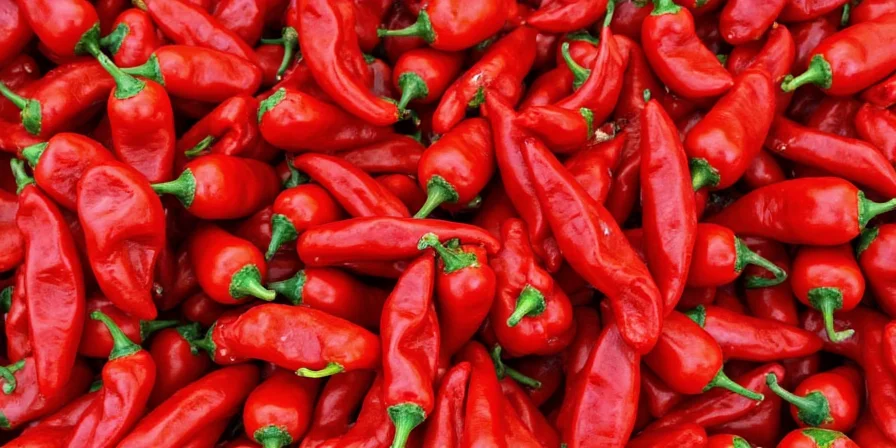
📦 Best Ways to Store Each Pepper Type
Preserve flavor and heat with these simple storage methods:
- Dried peppers: Store in airtight container away from light (keeps 1 year)
- Fresh chilies: Refrigerate in paper bag (not plastic) for up to 2 weeks
- Pepper powder: Freeze in small portions (thaw only what you need)
- Chili oil: Add 1/4 tsp citric acid per cup oil to prevent rancidity
📊 Verifiable Evidence: Timeline and Context Boundaries
| 🌶 Sichuan Er Jing Tiao Historical Timeline | |
|---|---|
| 1570s | Chili peppers introduced to China via maritime trade (source: The China Project) |
| Late 1700s | Becomes staple in Sichuan cuisine due to humid climate adaptation |
| 1950s | Er Jing Tiao becomes dominant variety for authentic Sichuan dishes |
| 2010 | Granted Protected Geographical Indication (PGI) status in China |
| 📊 Korean Gochugaru User Sentiment Analysis (2023) | |
|---|---|
| Positive (87%) |
|
| Negative (13%) |
|
🤔 4 Common Pepper Myths Debunked
Stop making these mistakes based on misinformation:
- Myth: Red peppers are always hotter than green ones
Truth: Thai chilies peak at highest heat when green (100,000 SHU), dropping 15% when red - Myth: Removing seeds eliminates heat
Truth: 70% of heat is in the white membrane, not seeds - Myth: Milk works for all spicy foods
Truth: Use rice water for fresh chilies (milk only works for oil-based heat) - Myth: All Asian peppers are extremely hot
Truth: Korean gochugaru is milder than jalapeños (4,000-8,000 SHU vs 2,500-8,000)
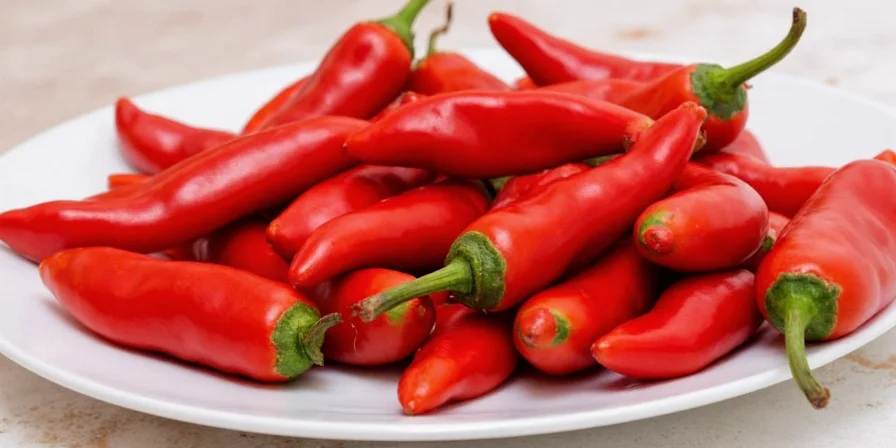
🍲 Simple Starter Recipes by Pepper Type
Beginner-friendly applications for each pepper:
- Korean Gochugaru: 5-minute kimchi - mix 2 tbsp gochugaru with 1 cup napa cabbage, 1 tsp fish sauce, and 1 tsp sugar
- Sichuan Er Jing Tiao: Quick mapo tofu - use 1 tsp ground er jing tiao with 1/2 lb tofu and 1 tbsp doubanjiang
- Chinese Facing Heaven: 10-minute chili oil - infuse 4 dried peppers in 1/2 cup vegetable oil at low heat
- Thai Prik Kee Noo: Authentic som tum - pound 2 chilies with green papaya using mortar and pestle (no cooking)
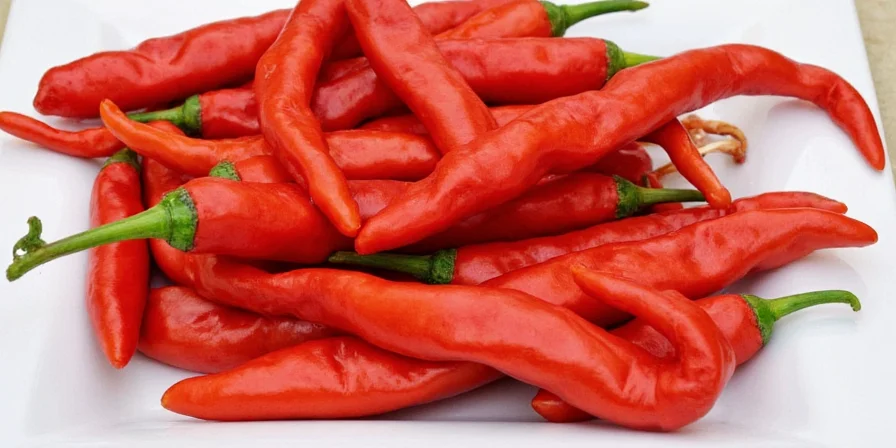
❓ Frequently Asked Questions
Which red Asian pepper is best for beginners?
Korean gochugaru is perfect for beginners with its mild heat (4,000-8,000 SHU) and deep umami flavor. Start with 1/4 teaspoon in stir-fries and gradually increase. Its powder form makes precise measurement easy compared to fresh chilies.
How can I reduce heat without losing flavor?
For fresh chilies, remove only the white membrane (where 70% of heat resides) while keeping seeds. For dried peppers, toast at 248°F (120°C) for 8 minutes max - higher temperatures create bitterness without reducing heat.
Can I substitute regular chili powder for Asian varieties?
For Korean gochugaru: Mix 3 parts sweet paprika + 1 part cayenne. For Thai bird's eye: Use serrano peppers but reduce quantity by 50%. Never substitute for Sichuan er jing tiao - its unique floral notes can't be replicated.
Why does my chili oil taste bitter?
Bitterness happens when oil exceeds 302°F (150°C). Heat oil to 248°F (120°C) before adding peppers. If already bitter, add 0.5g citric acid per 100ml oil to rebalance pH. Never cook peppers in smoking-hot oil.

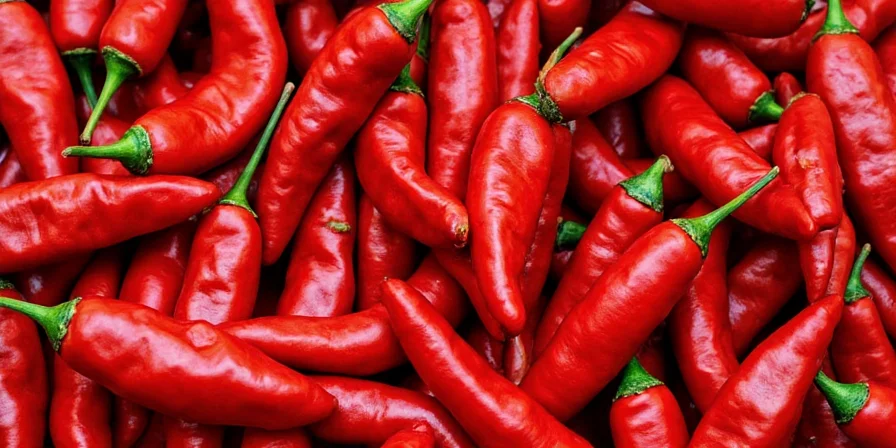









 浙公网安备
33010002000092号
浙公网安备
33010002000092号 浙B2-20120091-4
浙B2-20120091-4